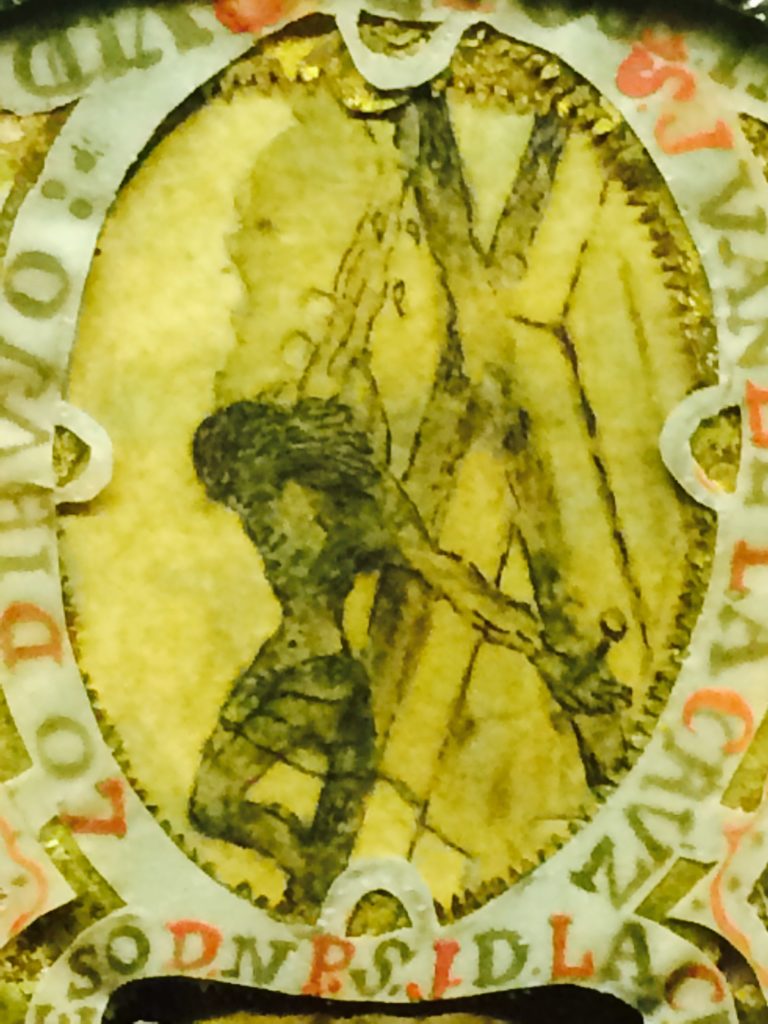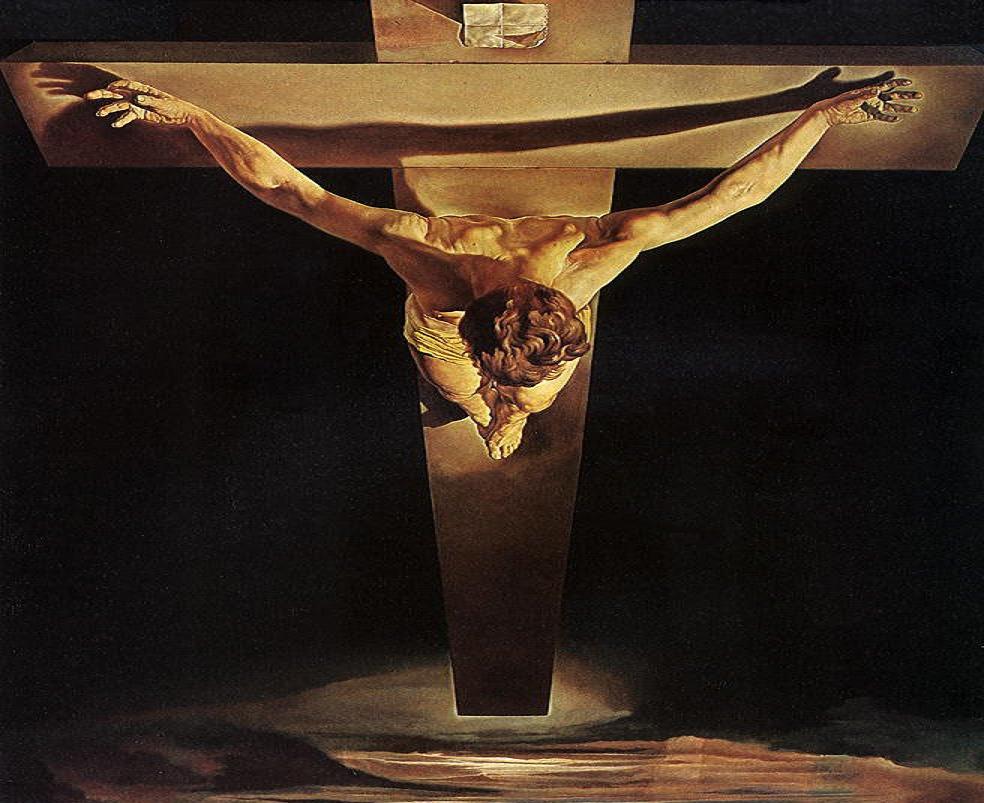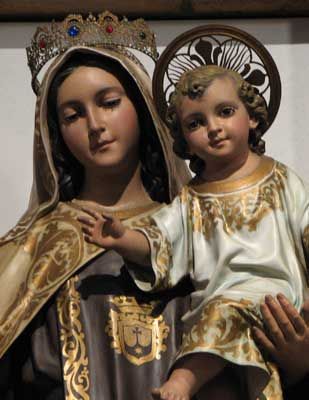
note from the editor: the image above is the one that inspired Dali (previous post). The canvas that Saint John of the Cross chose for his depiction of Christ was actually no more than 4X4 inches. This relic is housed in La Encarnación in Avila, Spain. Saint Teresa started her vocation there and eventually became a prioress in the Carmelite order. Later she moved on to reform the order, founding the Discalced Carmelites. Her first foundation, Saint Joseph’s Monastery, is walking distance from the La Encarnación.
Many of the photos on this blog that are attributed to thespeakroom.com come from Spain and will offer you a rare glimpse of original relics and paintings. The saints would love for you to share these images with others, but if you do so, please do your part in the work of the Holy Spirit, and link back to this blog. Thank you!
——————————–
We must become the canvas of God. Ultimately, that comes in understanding that God is the only One who is supremely beautiful, and we encounter that beauty by the revelation of His love; it is love that is beautiful. God is the fullness of love and therefore, He is beauty itself. It is God’s love that makes us truly beautiful. We have to acknowledge and see that; we have to receive and nurture that. Wherever there is love in the soul, God sees beauty. If there is love in your heart, God will look upon you and your beauty as His beloved.
In scripture, Our Lord often says, ‘You are sacred in my eyes and precious, and I love you… I have chosen you…Fear not, I am with you, and you are mine.’ This language of covenant expressed in scripture is nuptial language. It is spousal language. It is the same language used by the mystics, especially St. John of the Cross and St. Teresa of Avila. Ultimately, our faith life is a love affair with the love of loves. El amor de los amores.
Speaking to artists, Saint John Paul the II says, ‘Beauty is the key to the mystery of life and a call to transcendence.’ To seek transcendence means to pursue that which is beyond what we see with our senses. It is an invitation to savor life and dream of the future. When we see beauty, especially the beauty of creation – of mountains, landscapes, of broad, wide horizons, the sunset or sunrise, the ocean – there is something that touches deep down within our spirits that brings about this longing for something great. We long for something greater than the limitations and brokenness of this life.
The beauty of created things cannot satisfy. It stirs up a hidden nostalgia for God, which a lover of beauty like Saint Augustine can express in comparable terms. ‘Late have I loved you, oh Lord. Beauty so old, and so new. Late have I loved you.’
During the Middle Ages, there was an era of study of the faith when Aristotle was being translated into Christian terms, and Christian philosophy was being refined as a catalyst for theology and an understanding of God. St. Thomas Aquinas is the beacon of that era, the Scholastic Period. For the Scholastics, the definition of beauty was ‘the splendor of truth.’ … That takes my breath away. I hope that just hearing that phrase awakens in us a longing to contemplate, a longing to let that resonate inside. Let that longing open up and rest in you.
Fyodor Dostoevsky, a great Russian Orthodox writer of the nineteenth century, said that in the world, there is only one figure of absolute beauty – Christ. That infinitely lovely figure is an infinite marvel (to be continued).
May the Lord bless us, protect us from all evil and bring us to everlasting life.
(SOURCE: Denver Retreat, October 2015)
Copyright 2016, Fr. Robert Barcelos. All Rights Reserved
‘Arm yourselves with the armor of faith and the sword of truth. Pray for the grace to forgive and to ask for forgiveness – and for the healing of wounded bodies and souls.’
[sbscrbr_form]
If you liked this post, share it by clicking on one of the social media icons. And if you were inspired or have a prayer request, share that too under the ‘comment’ section!


